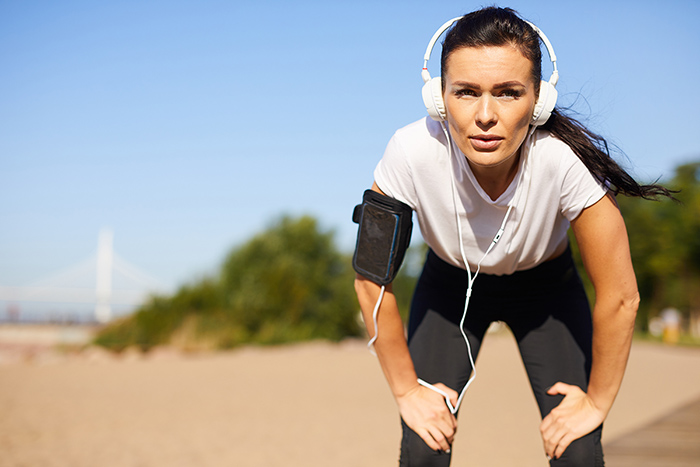A Complete Guide to Runner’s Knee
Runner’s knee is when pain occurs in the front of the knee. Specifically, pain in the patellofemoral joint, which is caused by an abnormality in the joint. The patella (kneecap) slides along the femur when you move. However, the abnormalities of this joint is a common cause of pain in runners and other athletes. Repetitive stress on this joint is the top cause of this condition. Pain is worse during running, sitting, and squatting.
The Anatomy of Runner’s Knee
The medical term for runner’s knee is patellofemoral pain syndrome. The patella lays on top of the knee joint. When your quadriceps (thigh muscles) tighten, the patella helps to pull the leg straight. It works similarly to a pulley. The patella slides naturally along a groove in the thigh bone. Repetitive stress causes pain at this junction, and the movements are no longer smooth.
Risk Factors of the Injury
Several factors contribute to runner’s knee. Any or a combination of these can cause the condition.
- Training error: increased volume or intensity of training puts extra stress on the knee. Excessive hill training and lack of recovery are also causes.
- Overtraining: Heavy weight-training for extended periods will increase pressure on the joint. This can happen in conditioned athletes too. Not allowing for proper recovery increases the risk of damage.
- Focal weakness: Weak muscles in the hip and thigh do not correctly support the knee. Therefore, additional pressure is placed on the patellofemoral joint.
- Injury: Hip, ankle, and knee injuries change the biomechanics of the knee. Leading to runner’s knee symptoms.
- Excess weight: Being overweight can put unwanted stress on the knee. In fact, while walking, the pressure that is placed on each knee is nearly doubled.
- Flexibility: Tight muscles in the calf, thigh, or hamstrings can predispose a person to runner’s knee.
- Gender: Women are more likely to get runner’s knee. Their wider hips cause a different knee alignment.
- Lifestyle: Certain lifestyle factors can increase the risk of runner’s knee. Frequent squatting or sitting for extended periods, for example.
Runner’s Knee Symptoms
There are several possible causes for runner’s knee. Therefore, there are different symptoms to look for. However, some symptoms are more common. But others may be the result of an underlying condition.
The primary symptoms include:
Knee crepitus: This is a grinding or crunching sound in the knee. Typically, this occurs after periods of resting. This can go away during use.
Pain in the front of the knee: This is the most common symptom. It occurs as the patella is misaligned from the femoral groove. Joint movement is no longer smooth. The pain is achy when resting and sharp when in use.
Swelling: The knee becomes swollen. Inflammation from the misaligned movements is the cause. This swelling can limit mobility and increase pain, AKA water on the knee.
Stiffness: Stiffness of the knee is most common after rest. It also occurs after the knee has been bent for some time. Riding in a car and sitting at a desk can increase stiffness.
Pain associated with runner’s knee will worsen with activity. The swelling and stiffness then will become more noticeable after rest. Medical treatment is necessary for runner’s knee. If symptoms persist for longer than two weeks, see your doctor.
Additionally, you can see a sports medicine physician for effective treatment. Call us now for a top specialist in your area, 888-409-8006.


No Comments